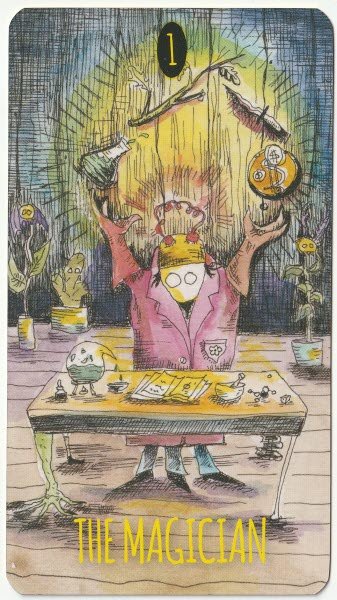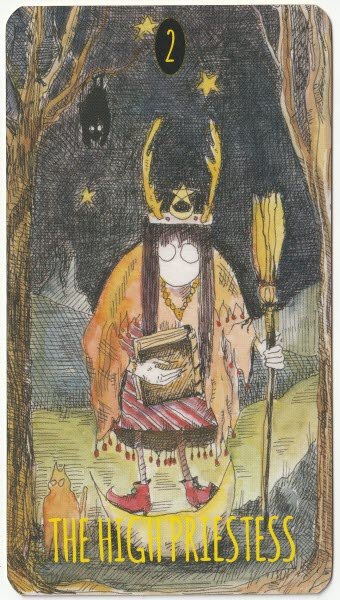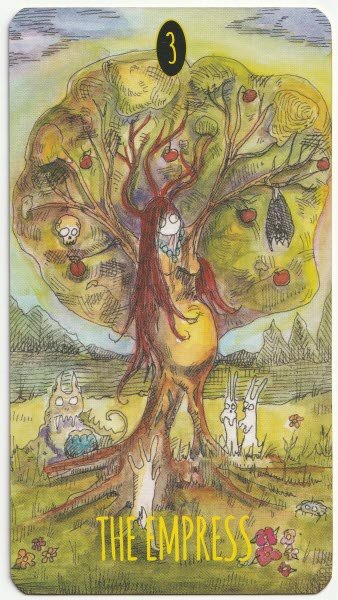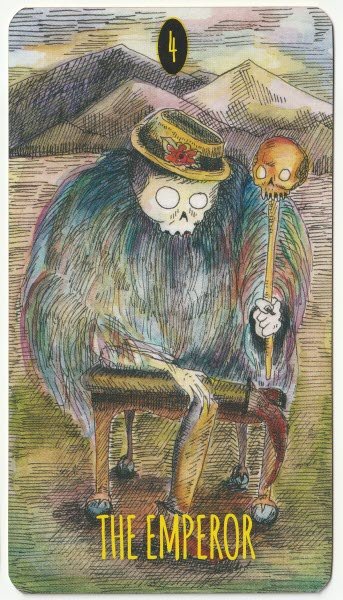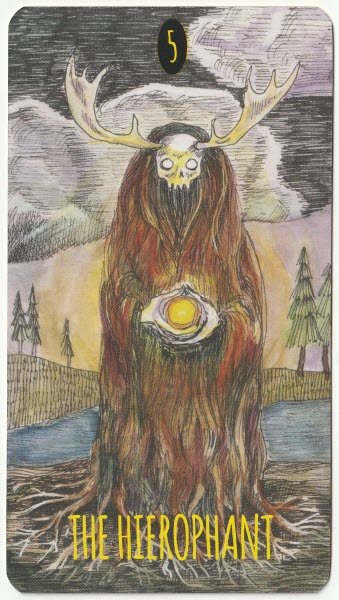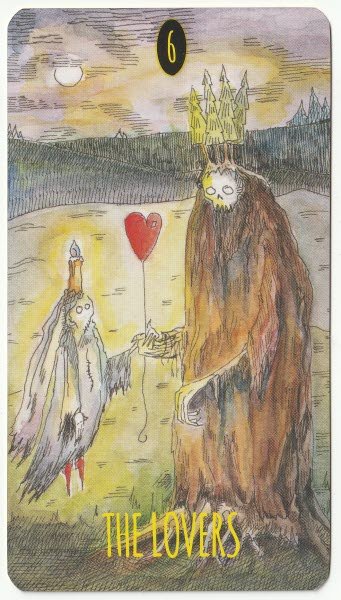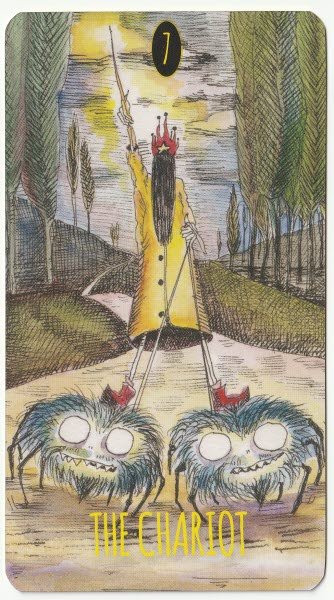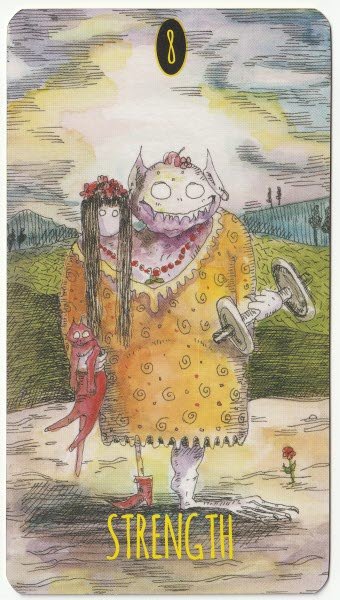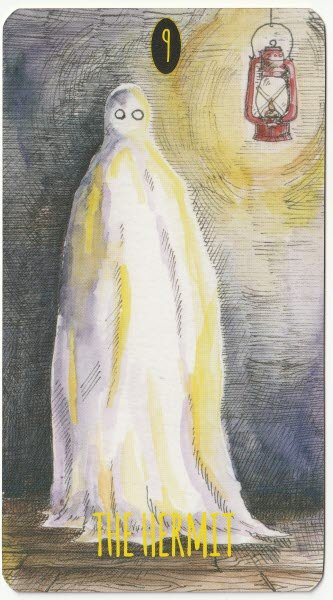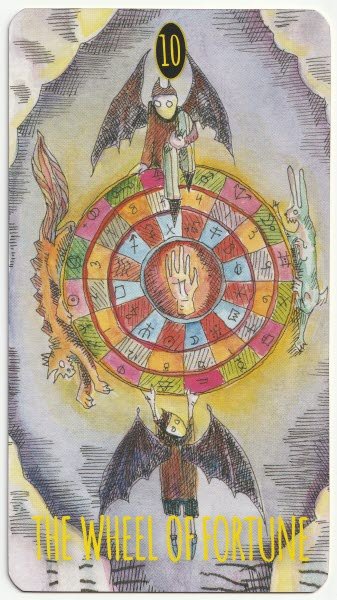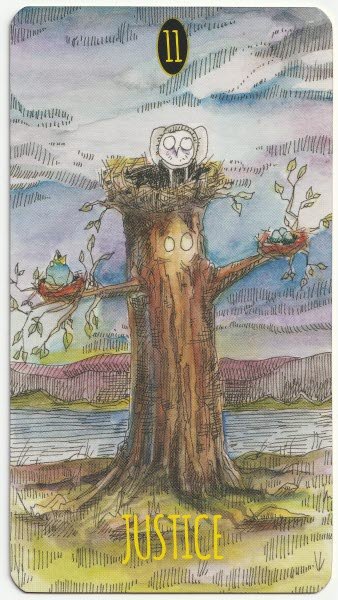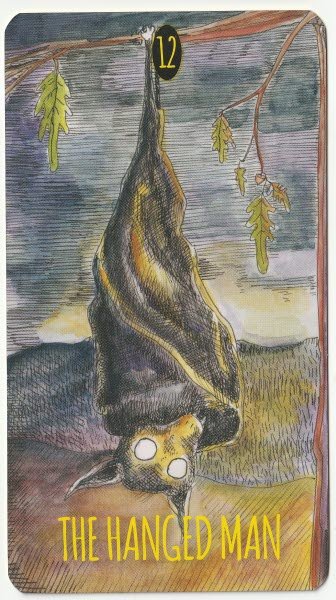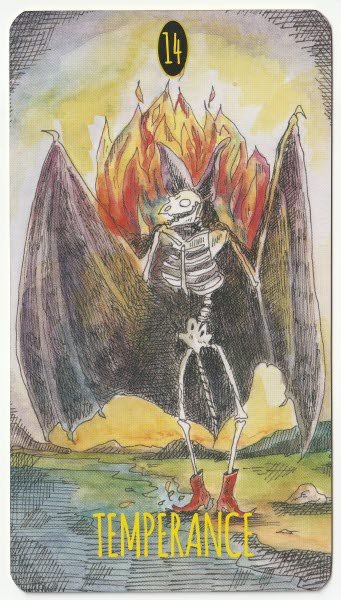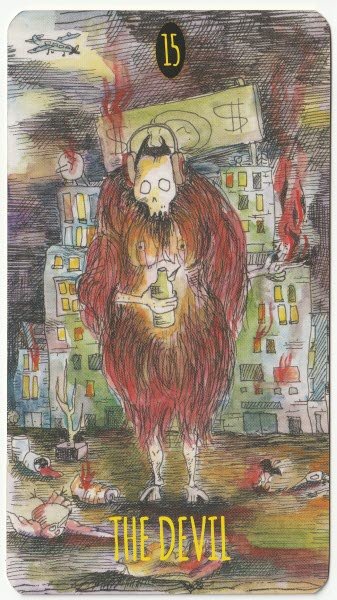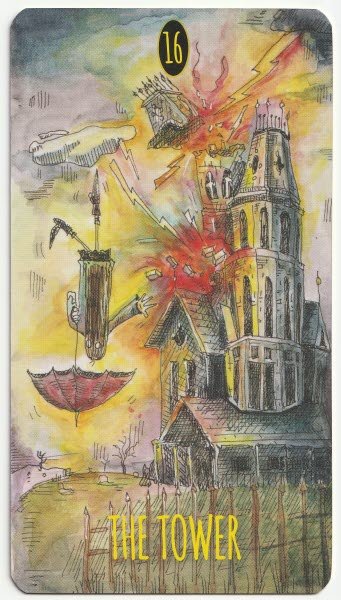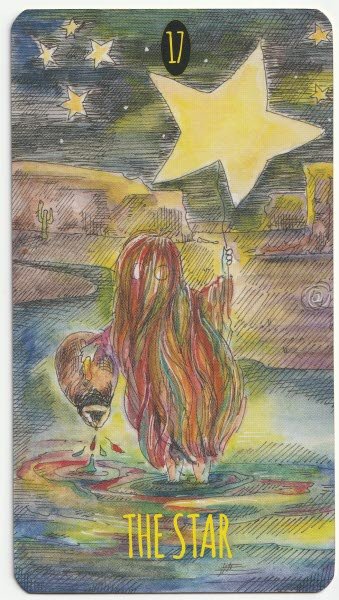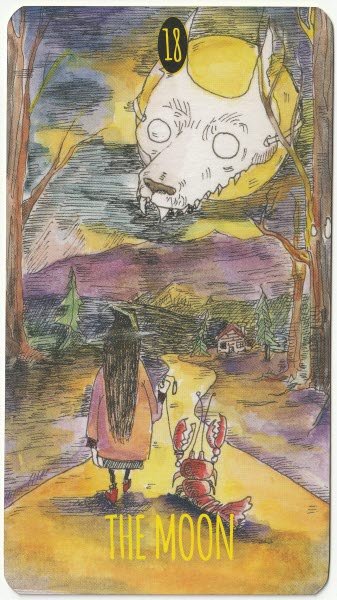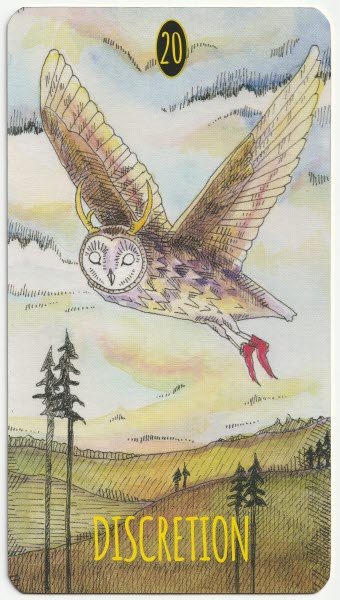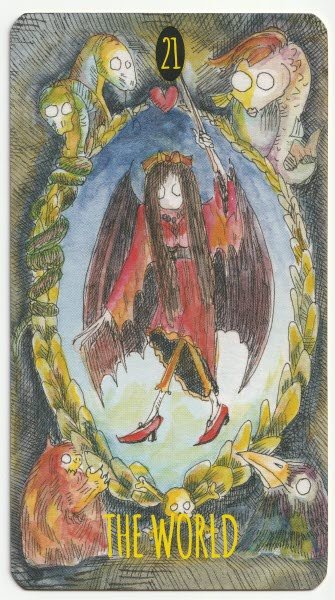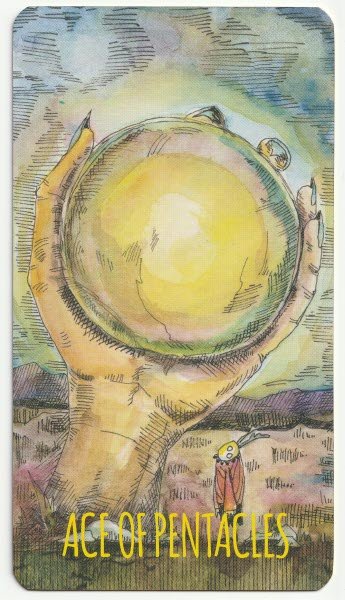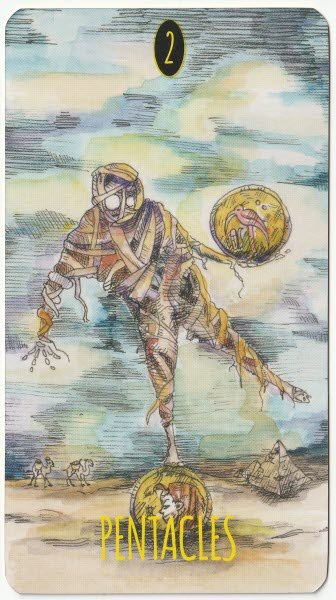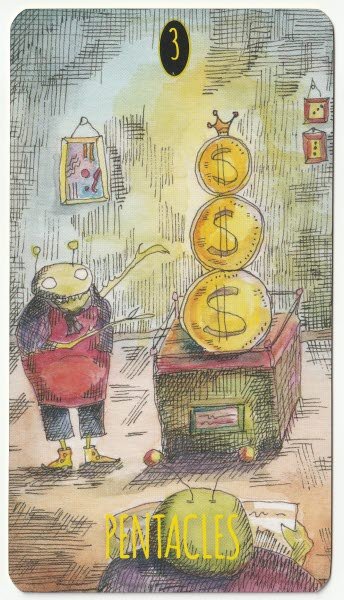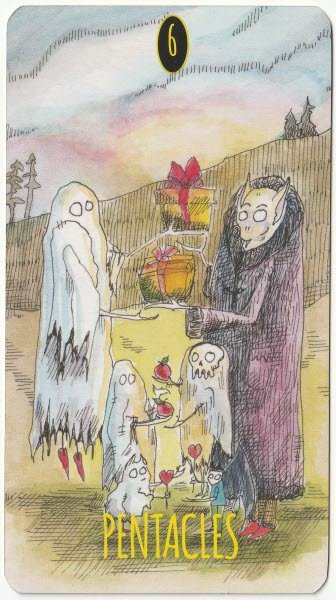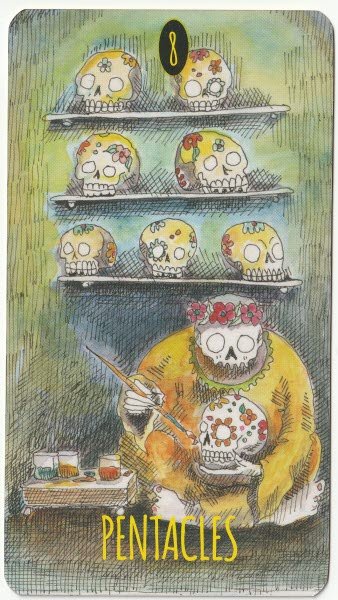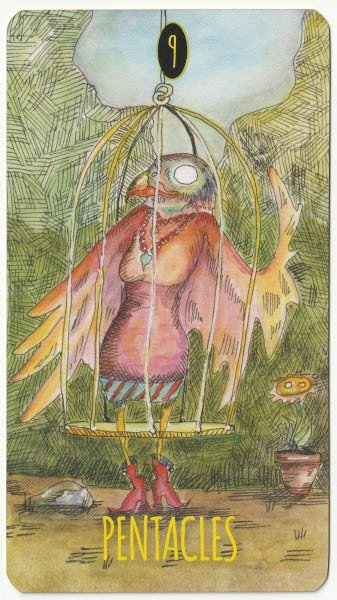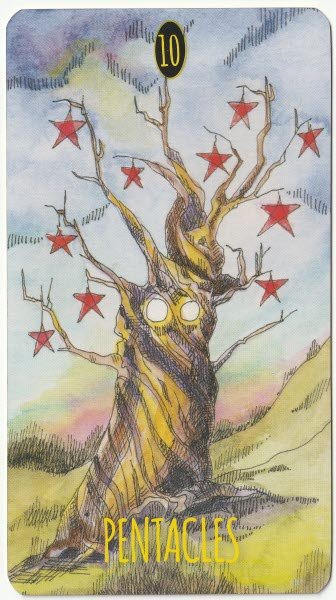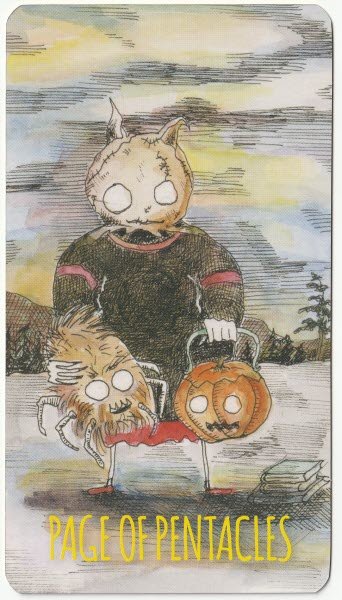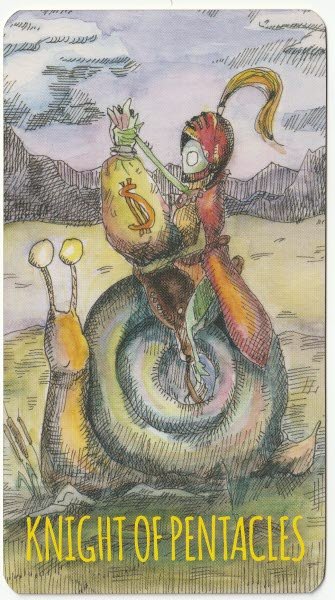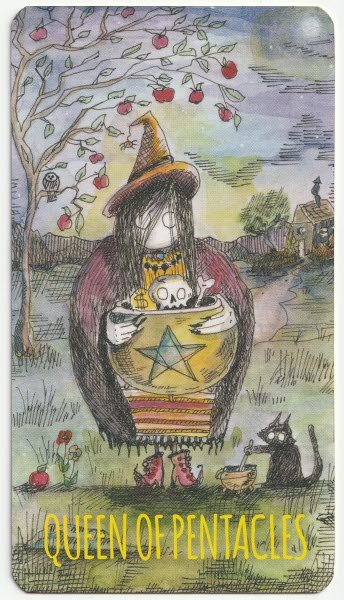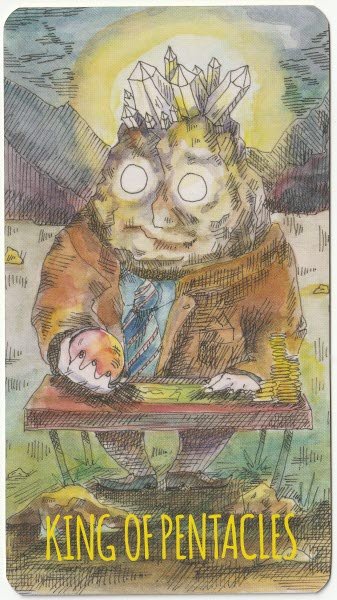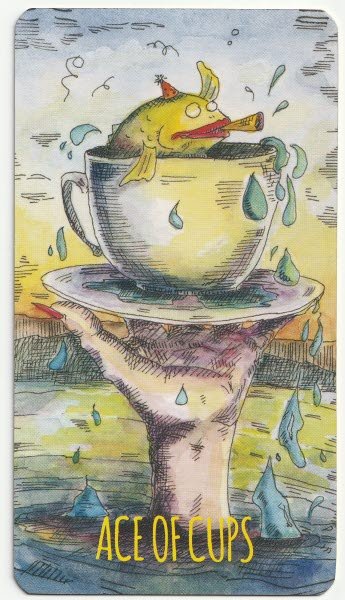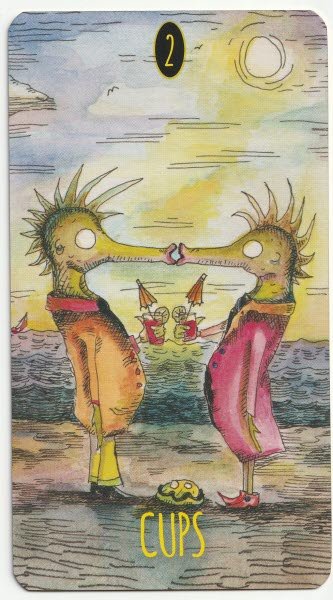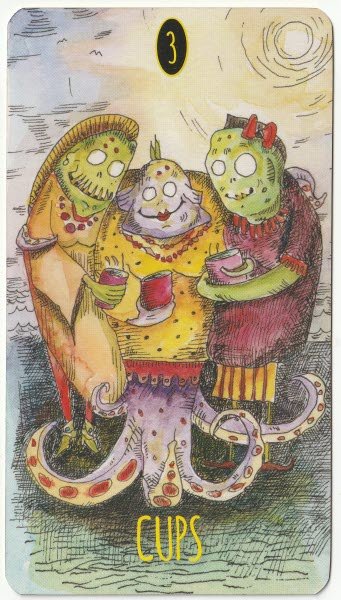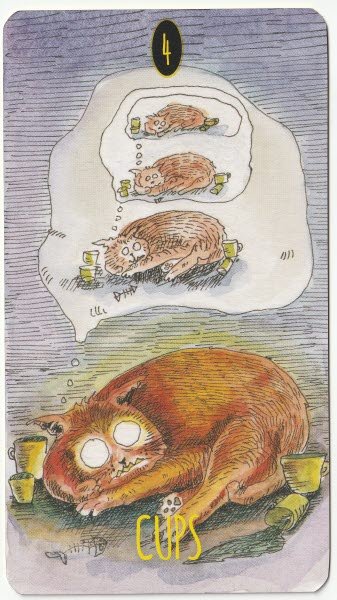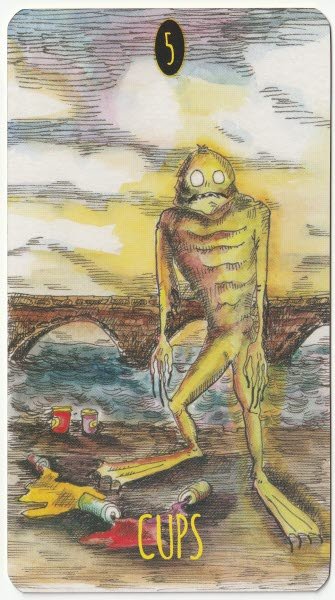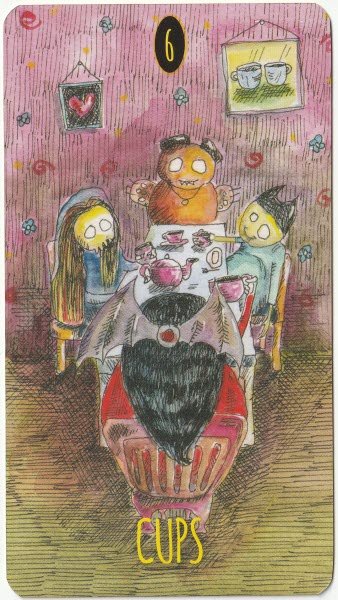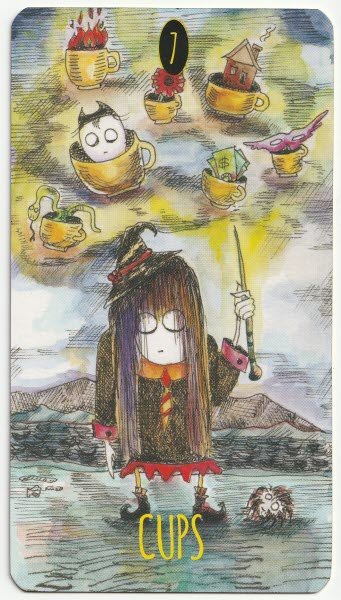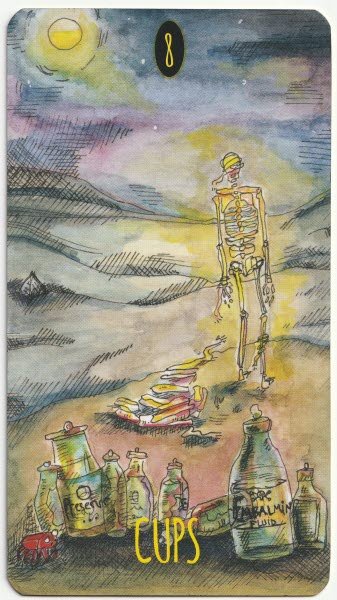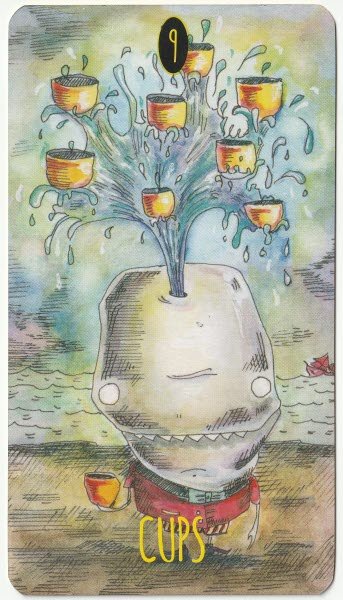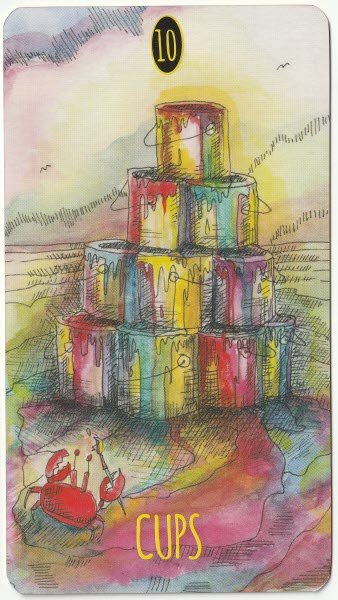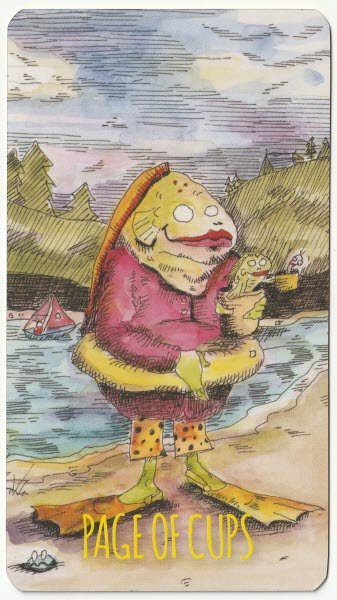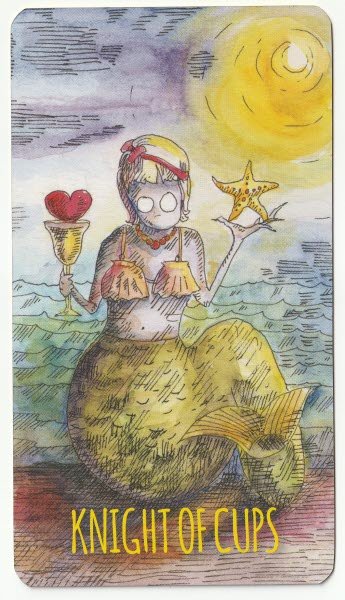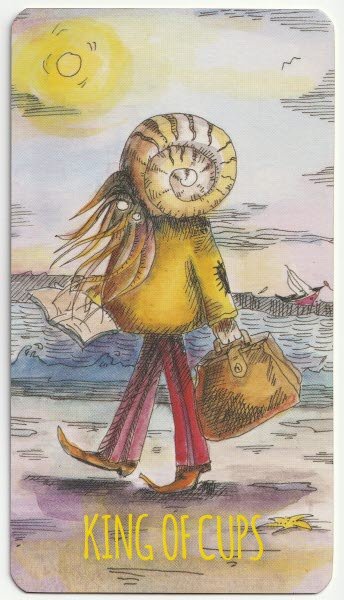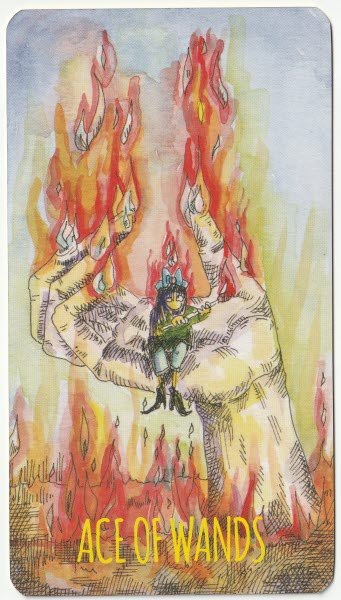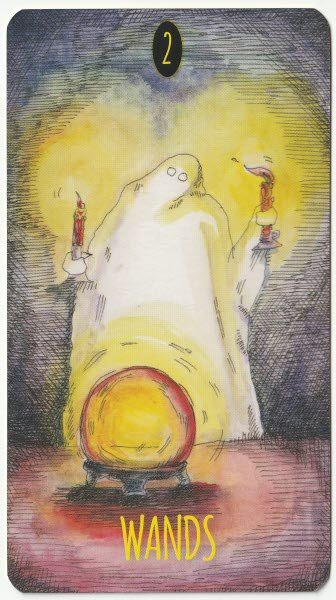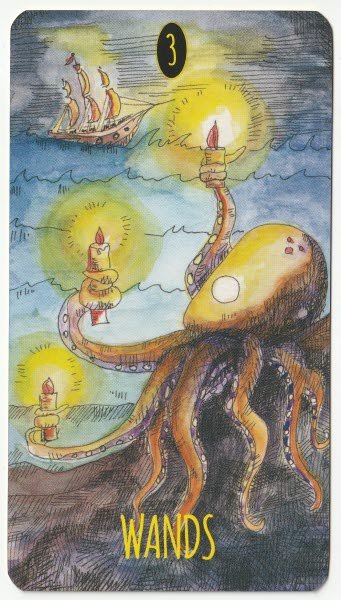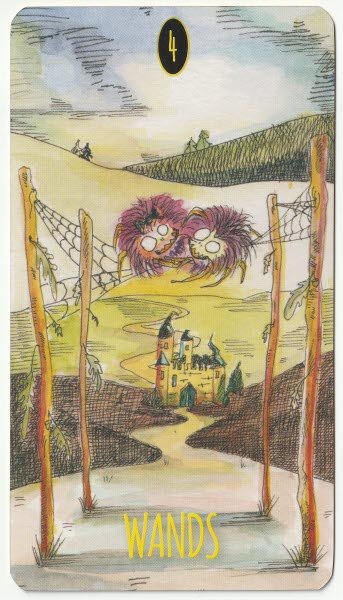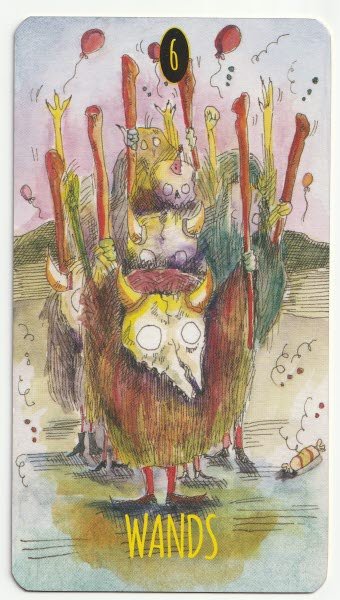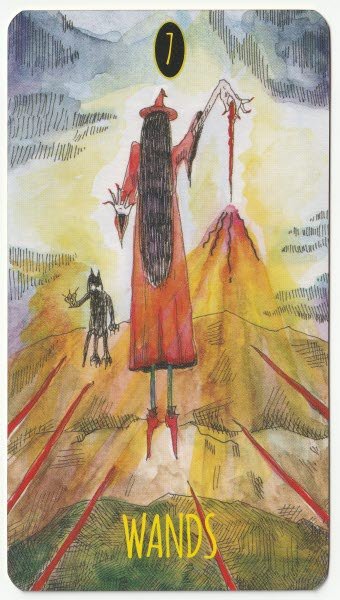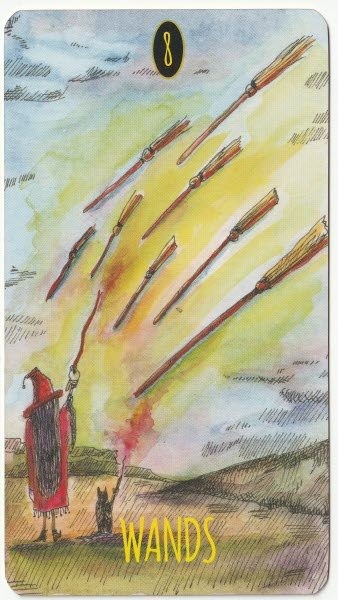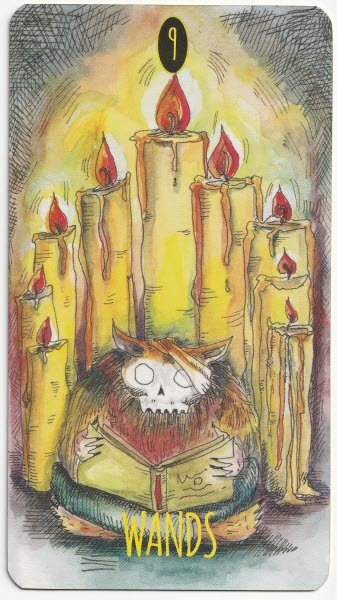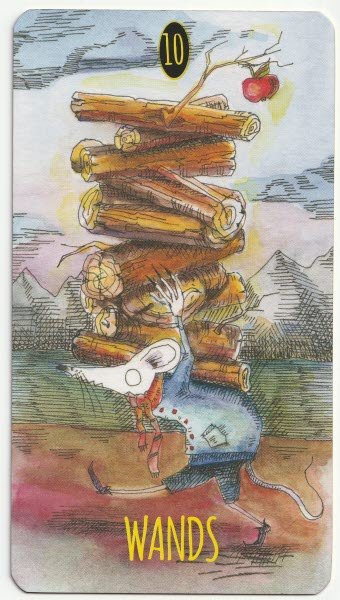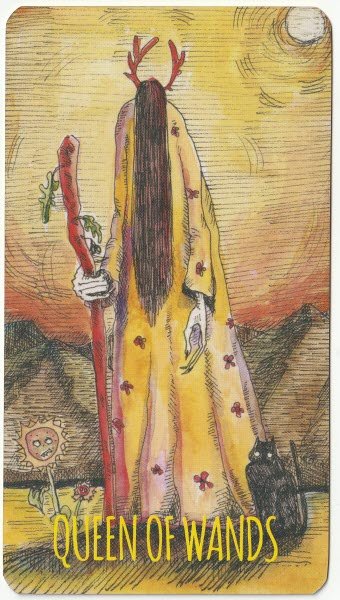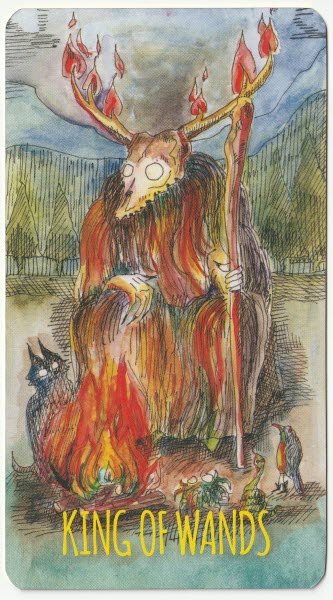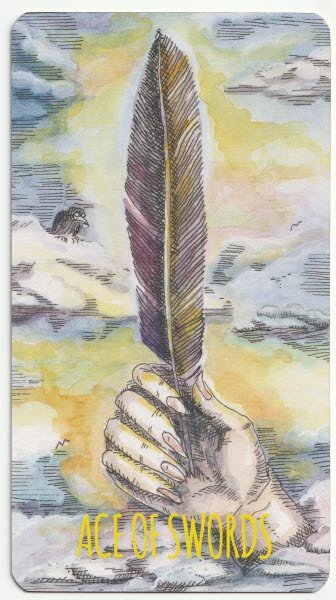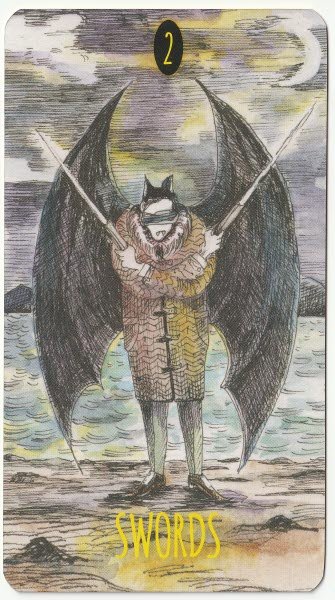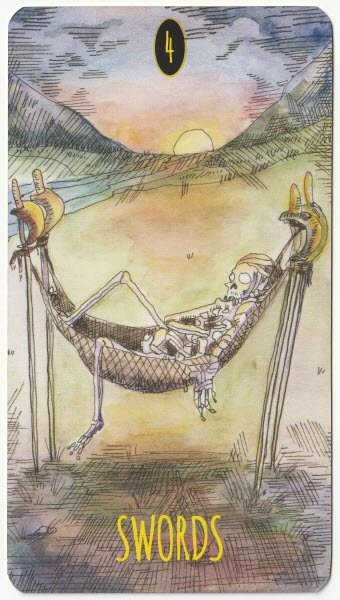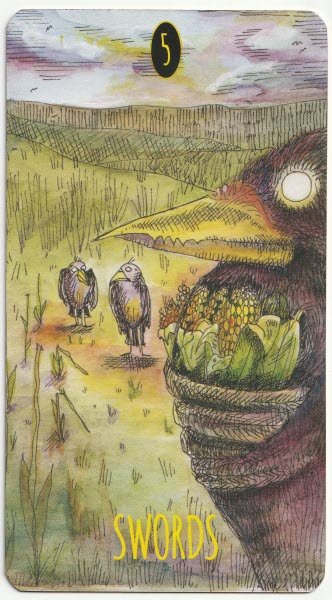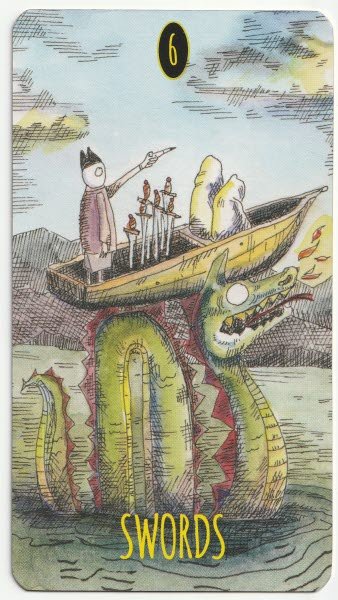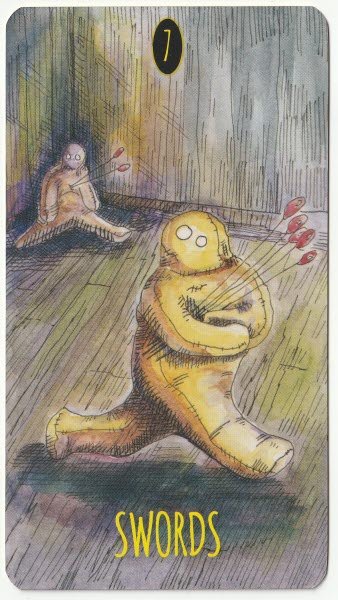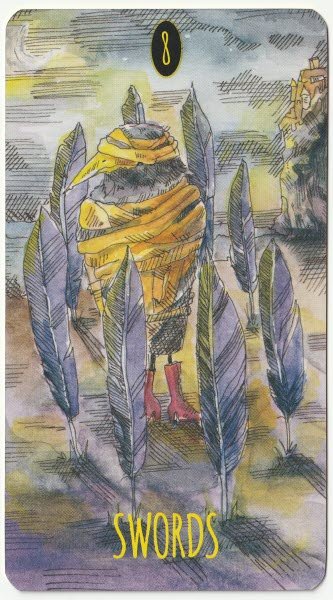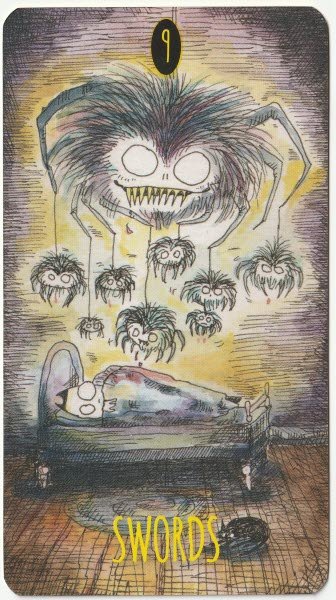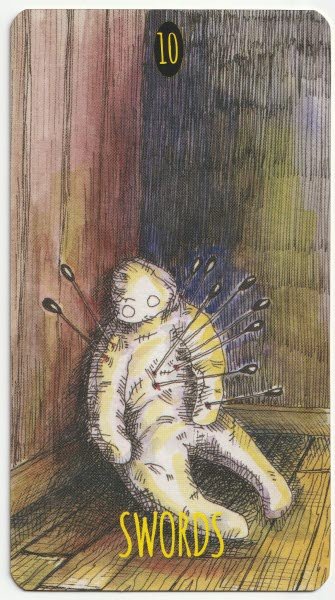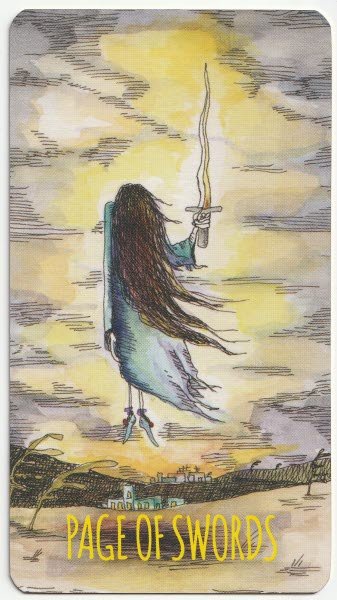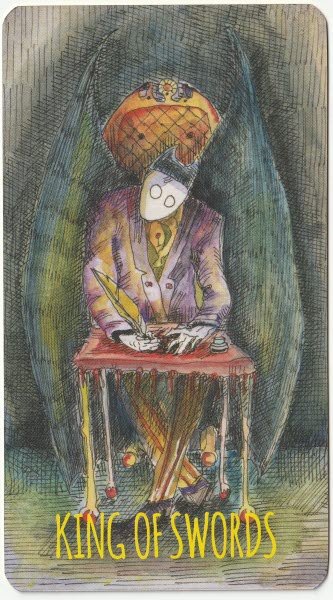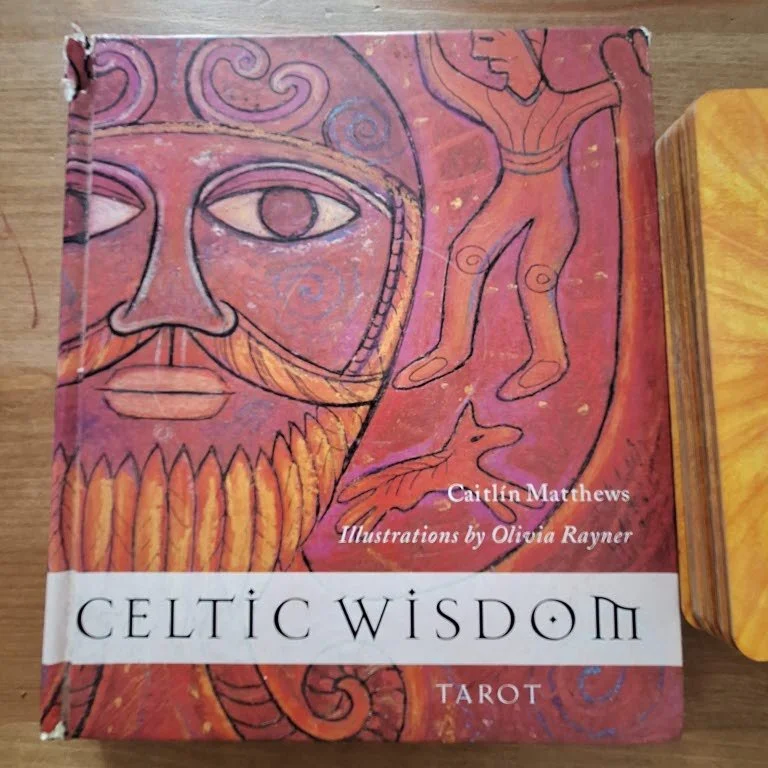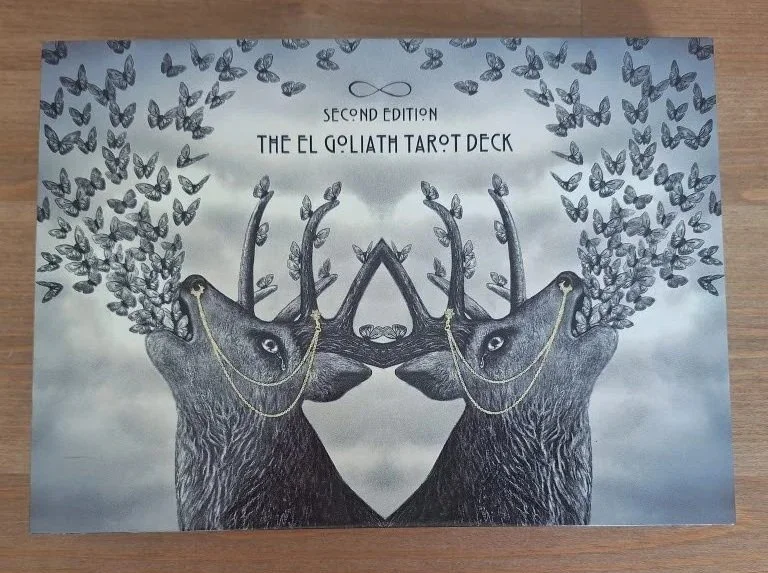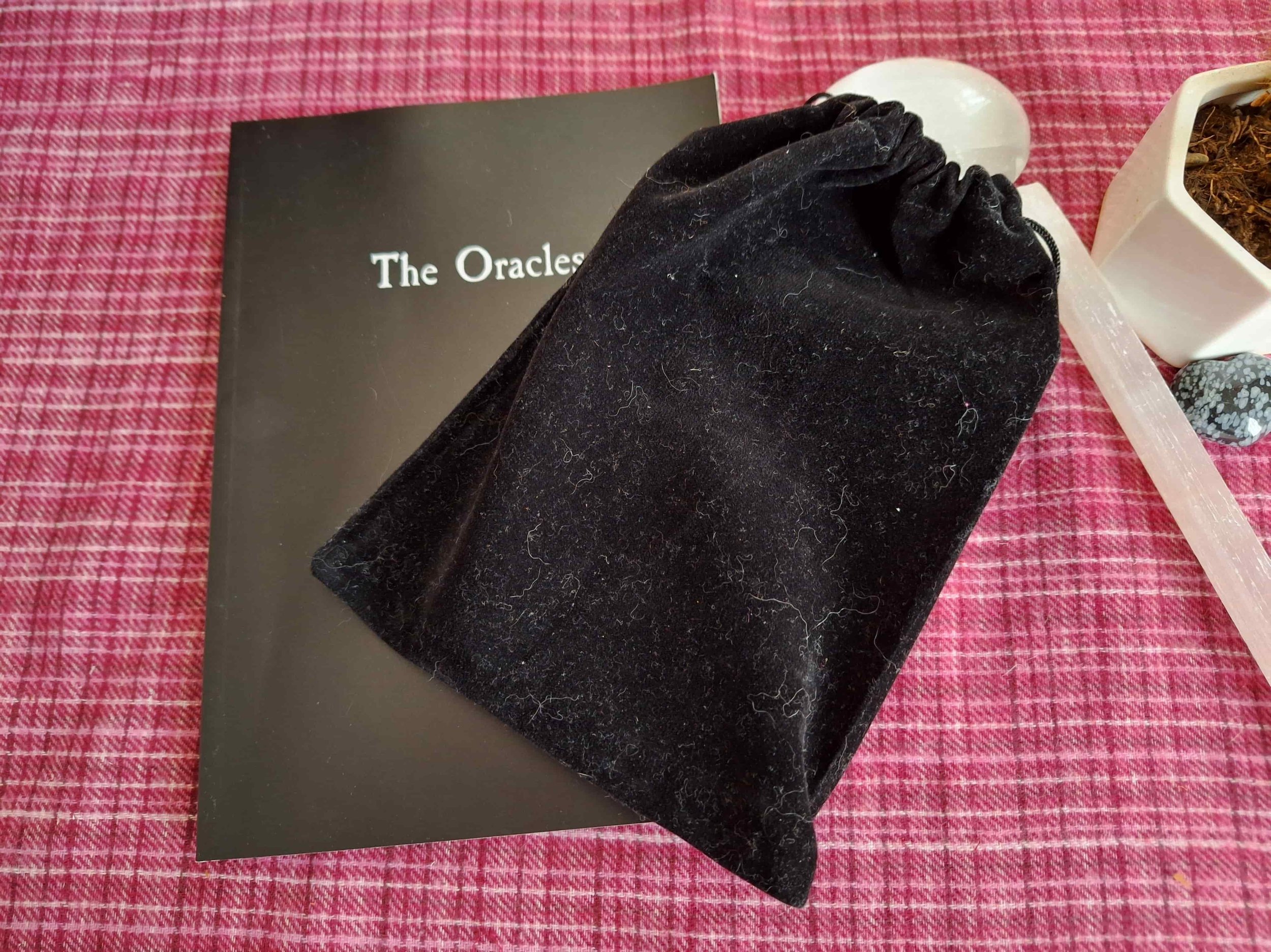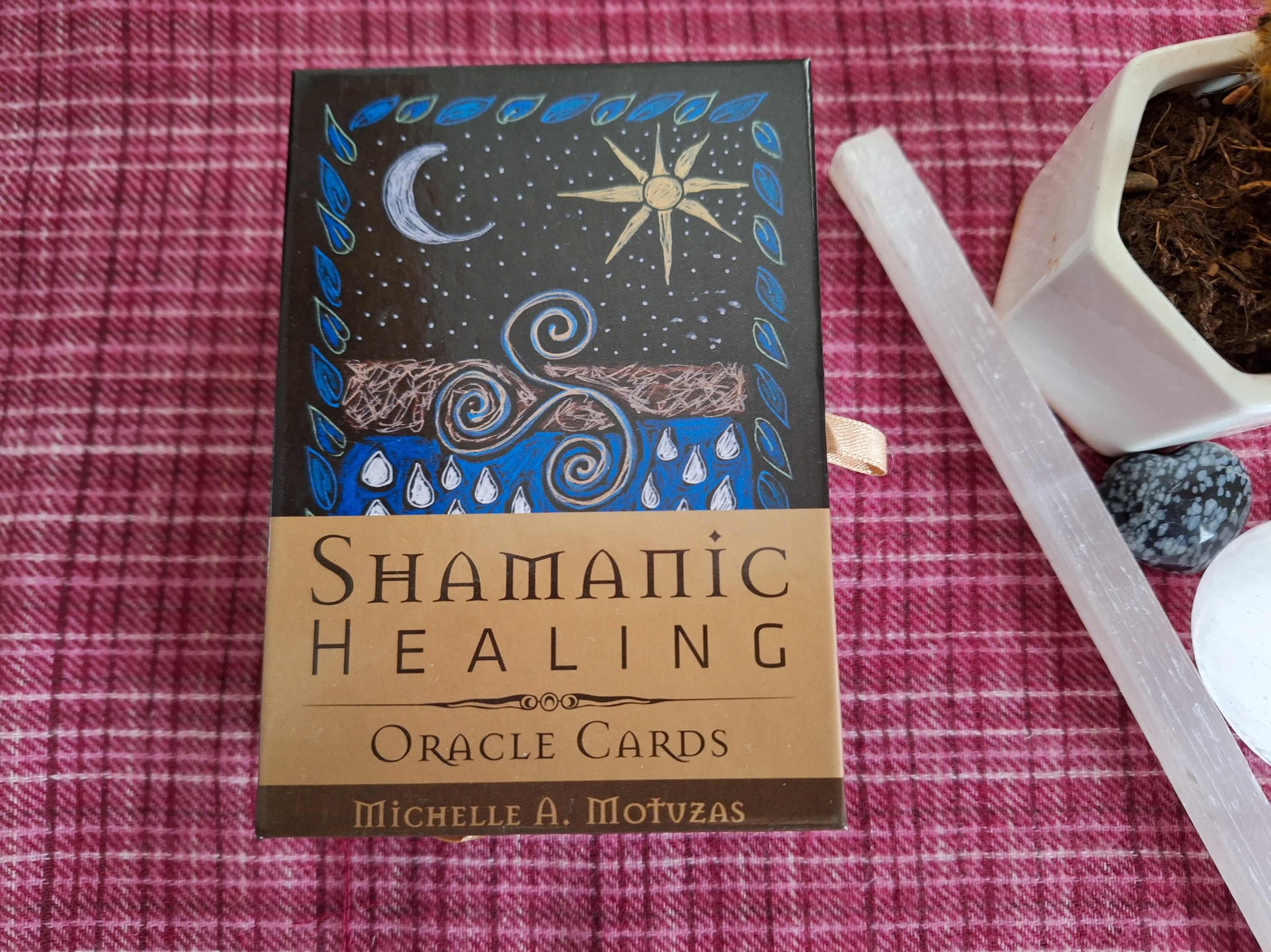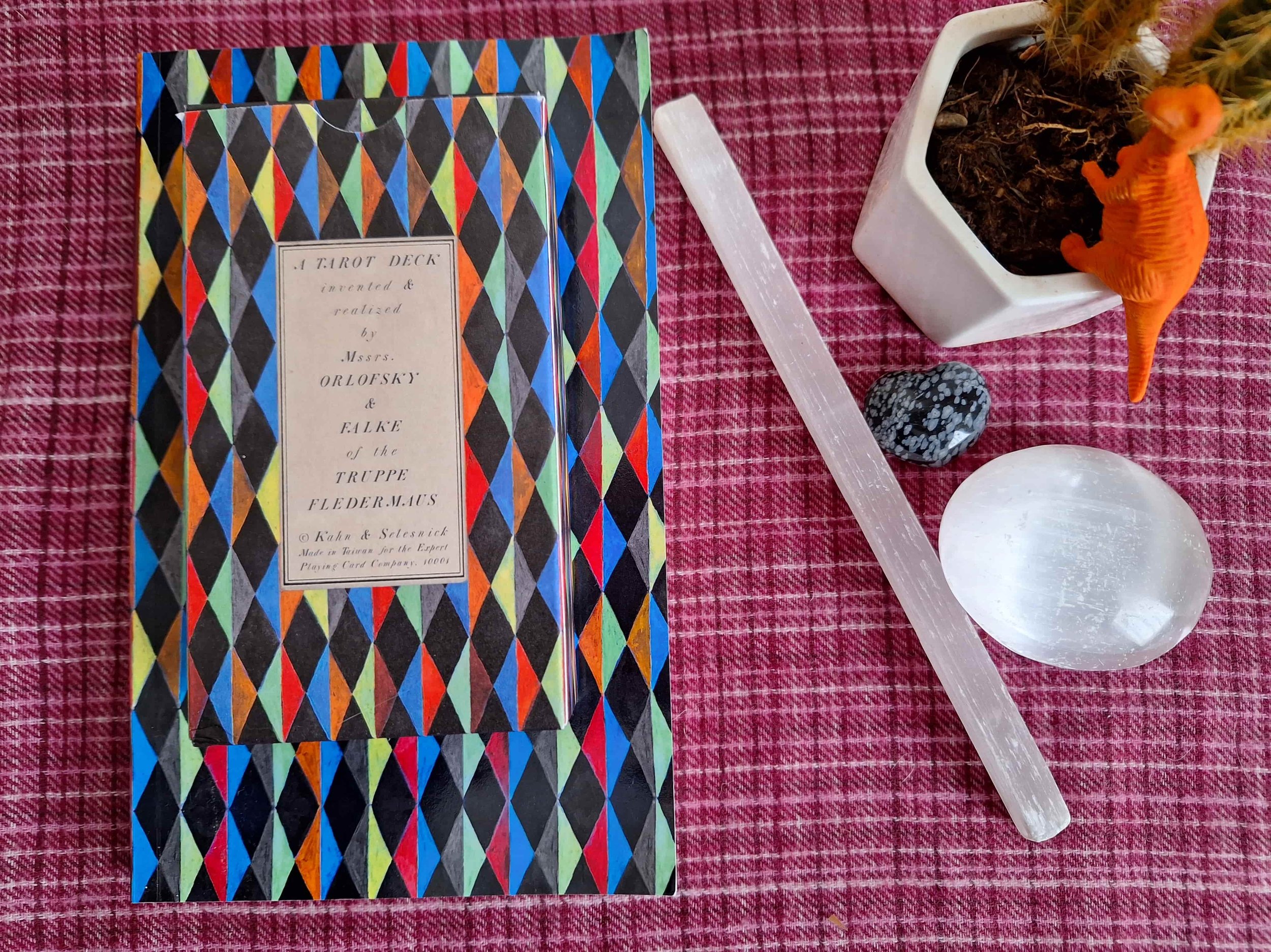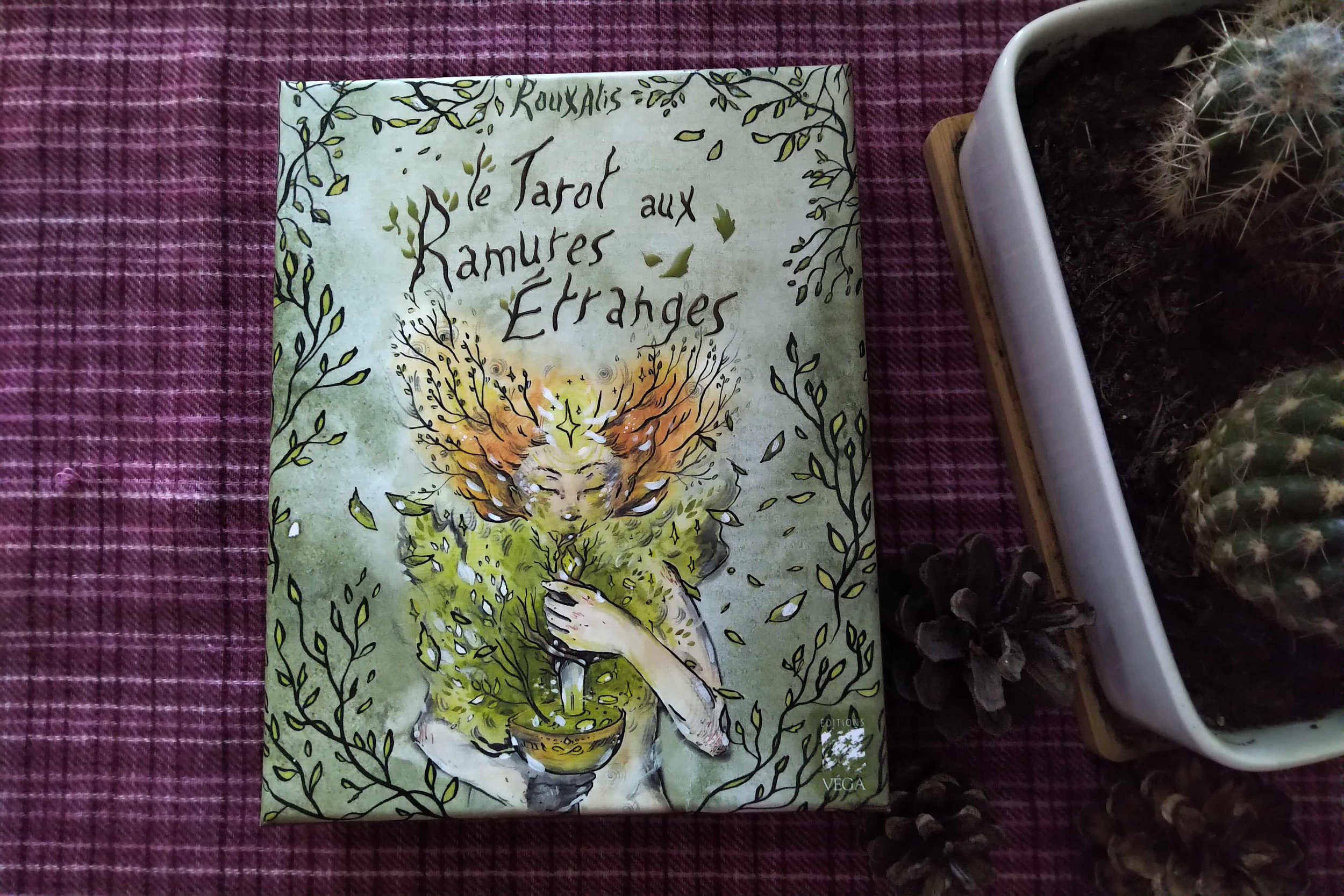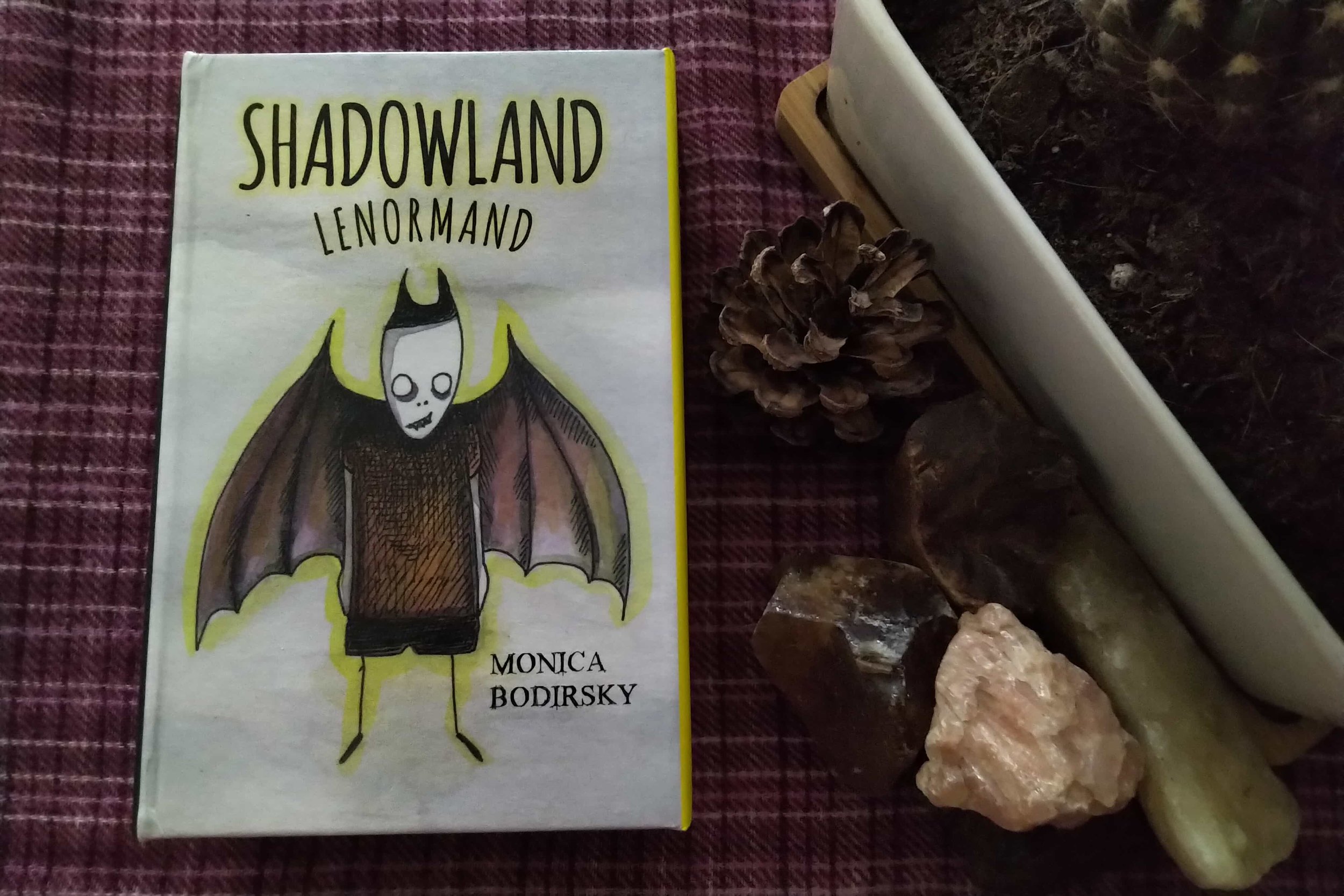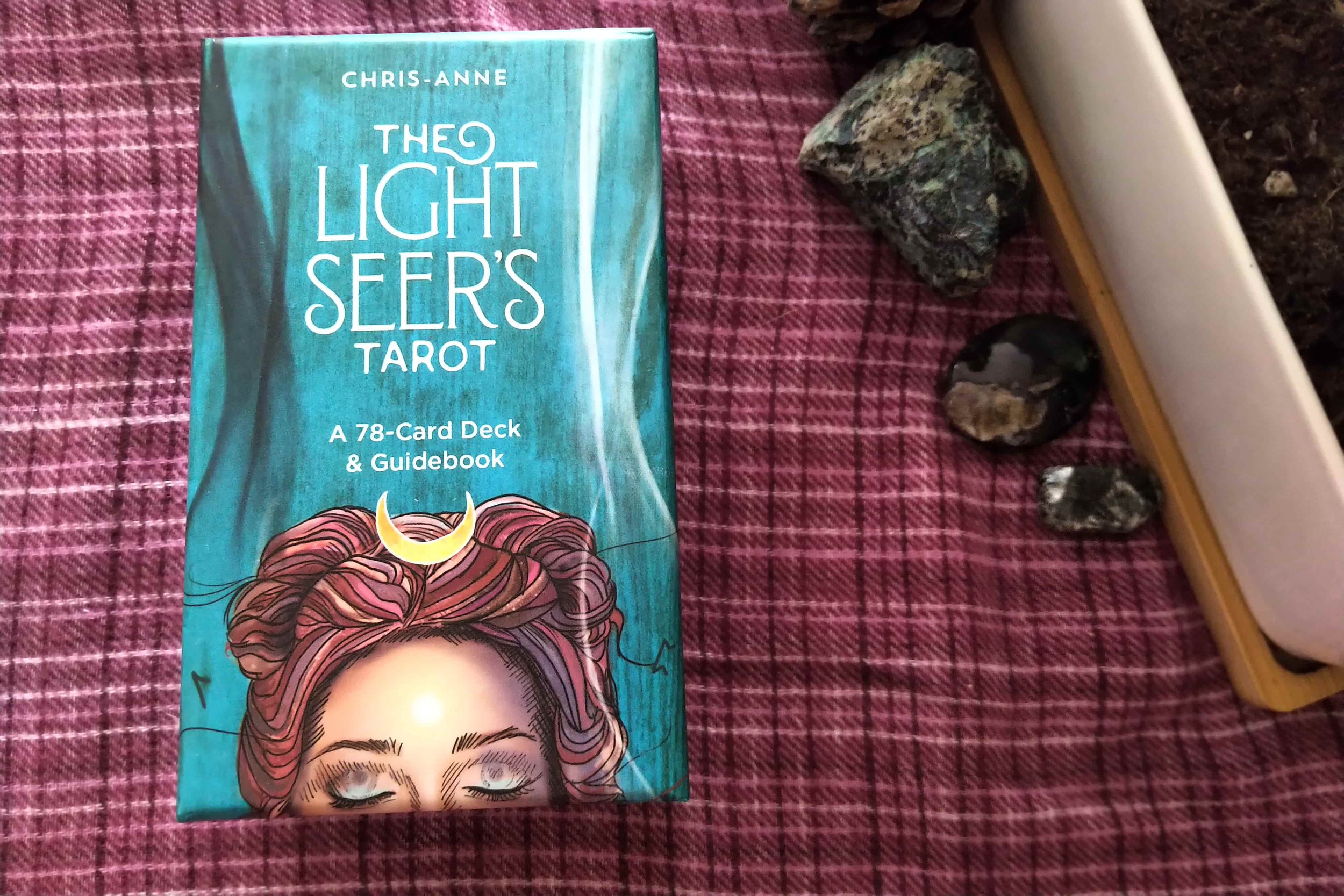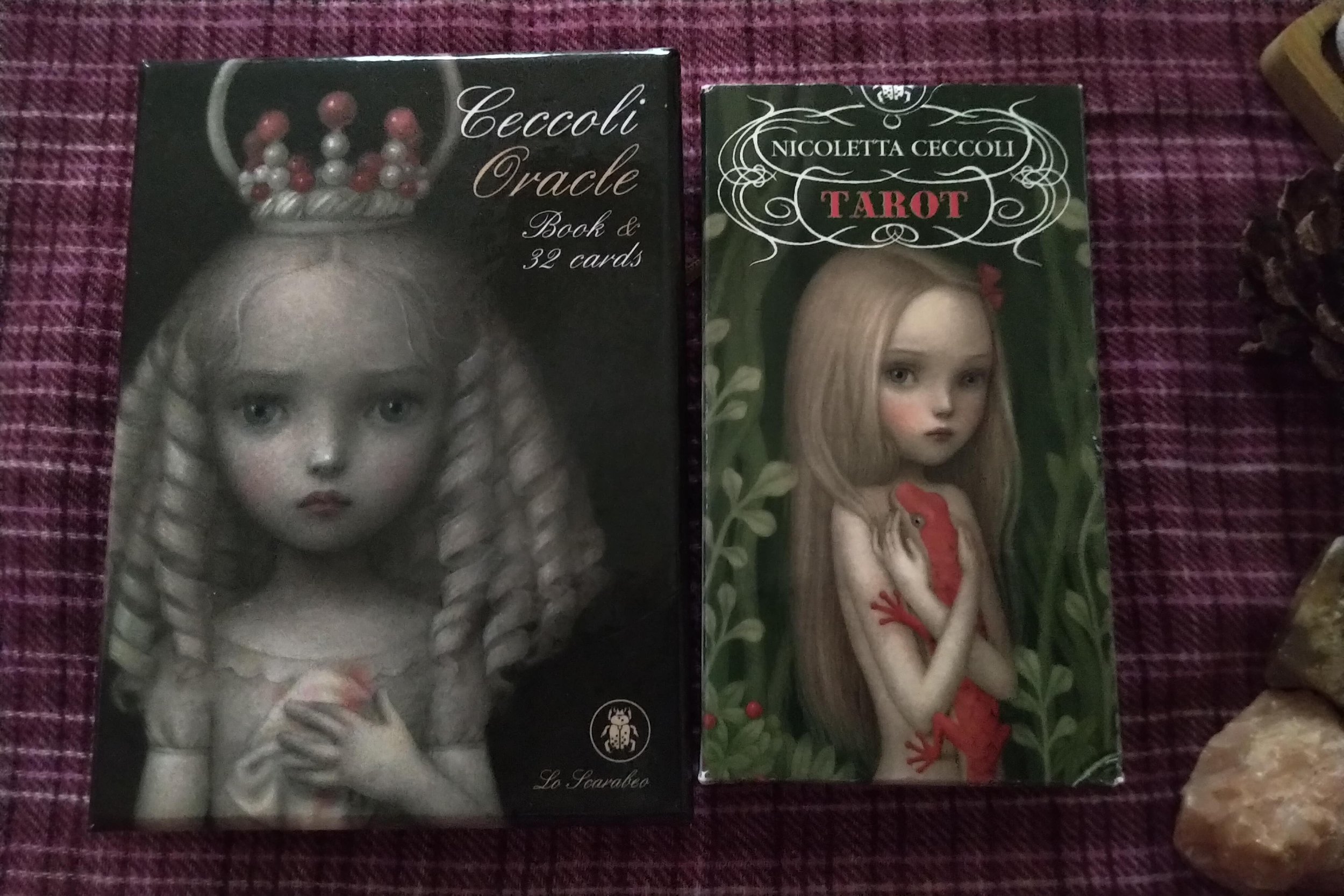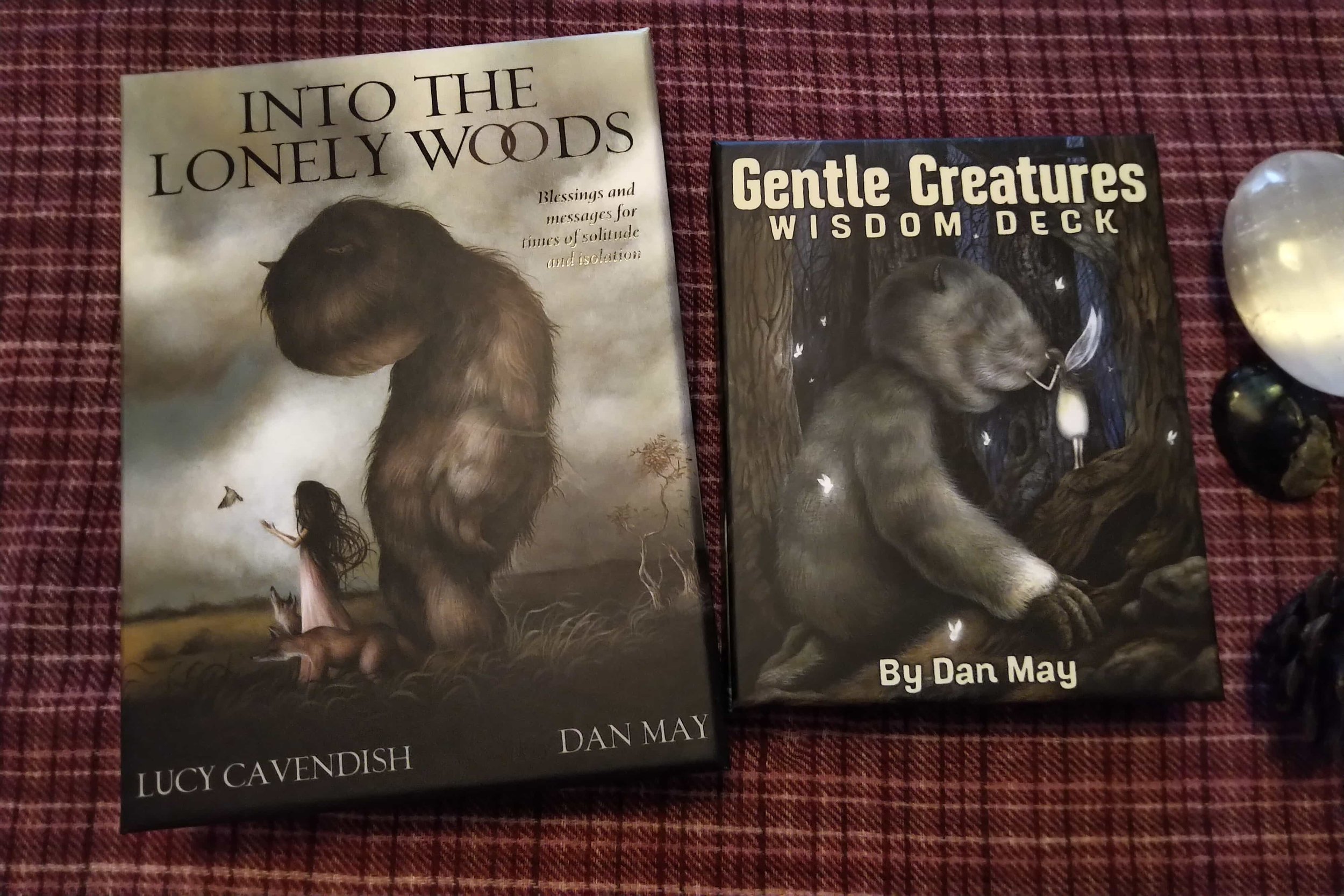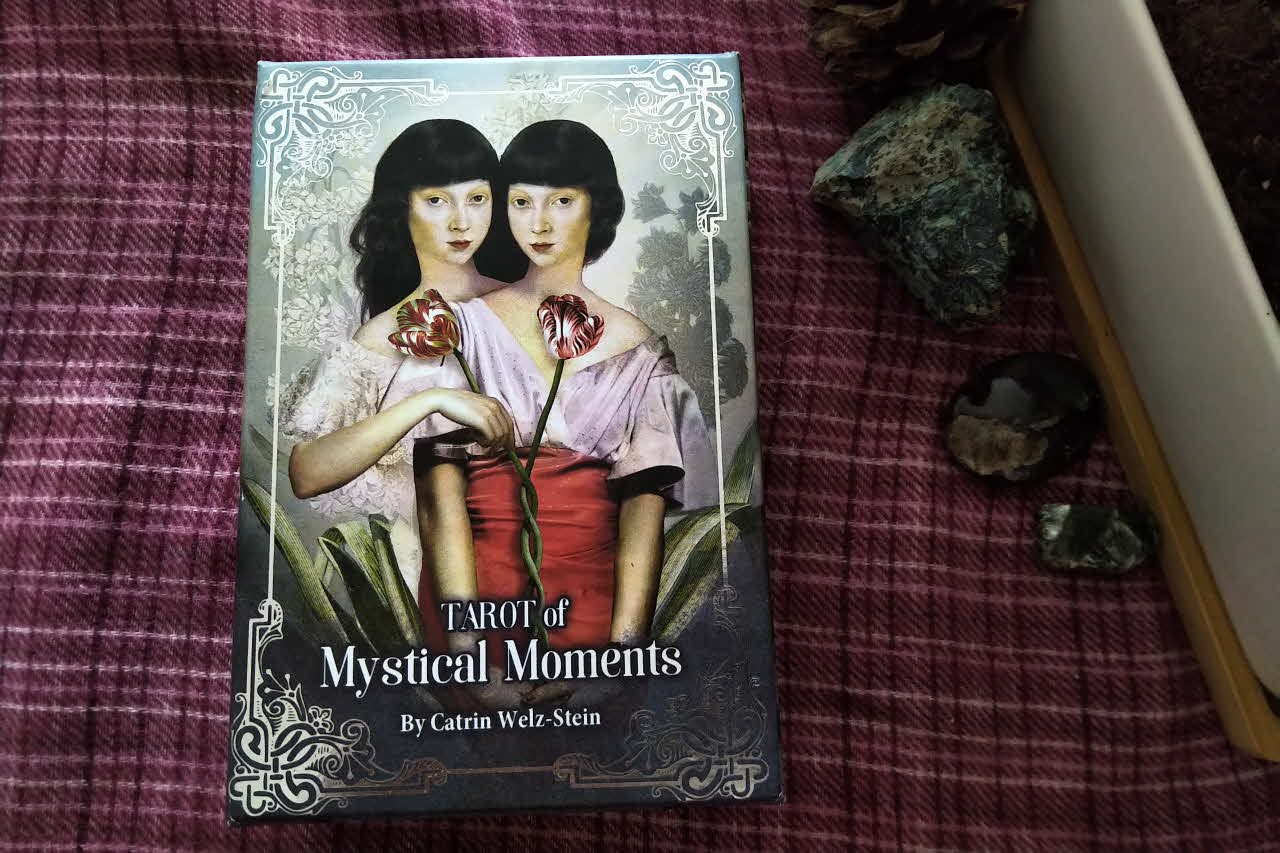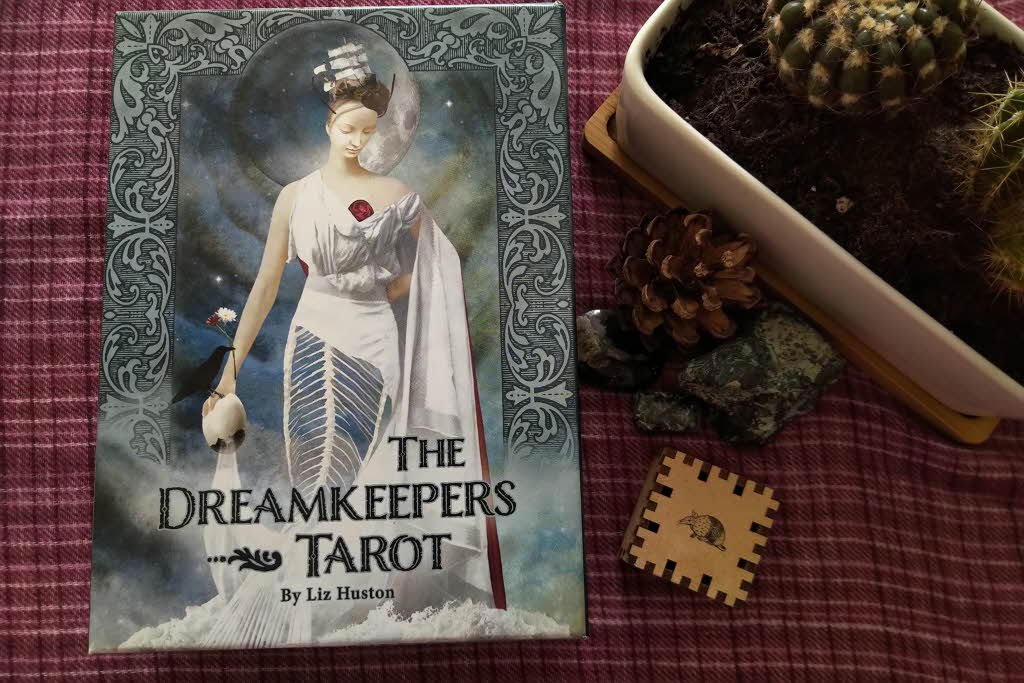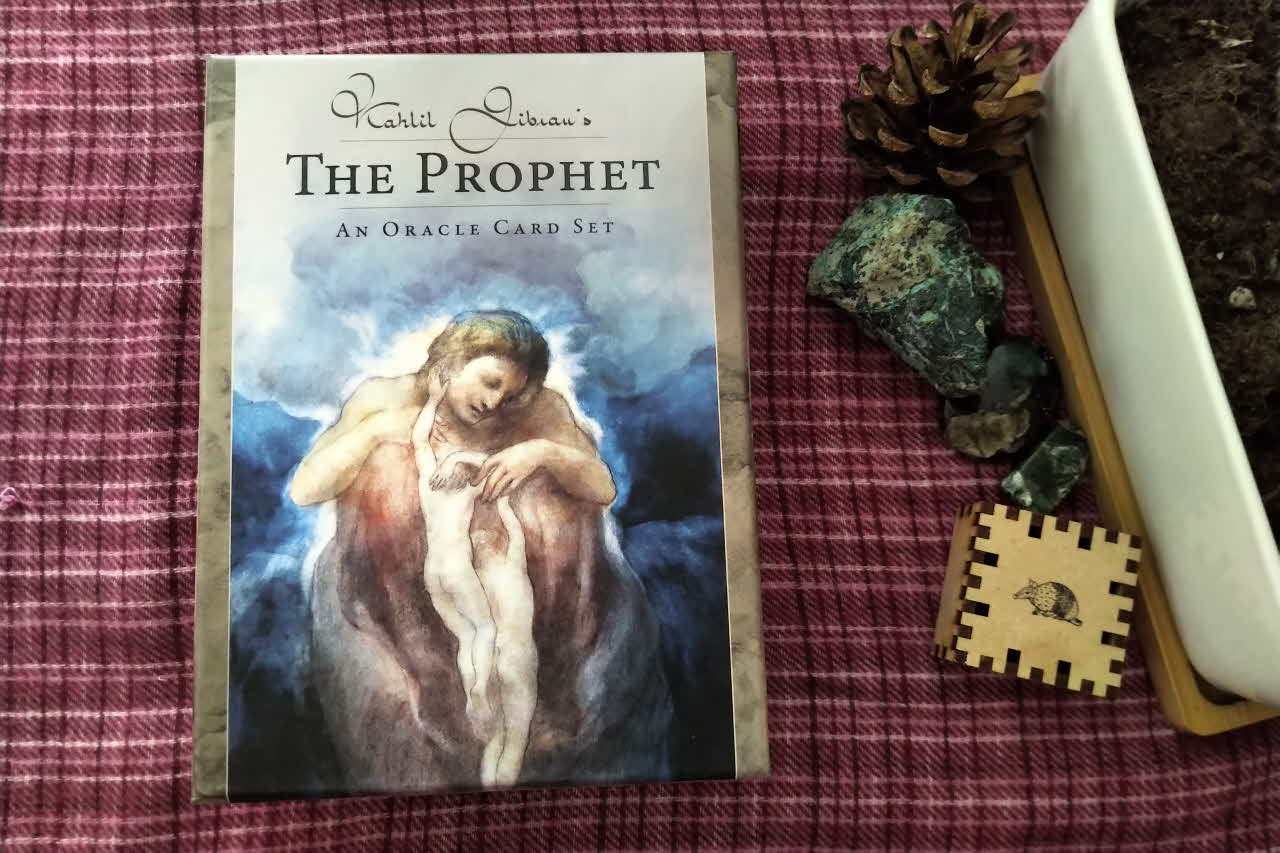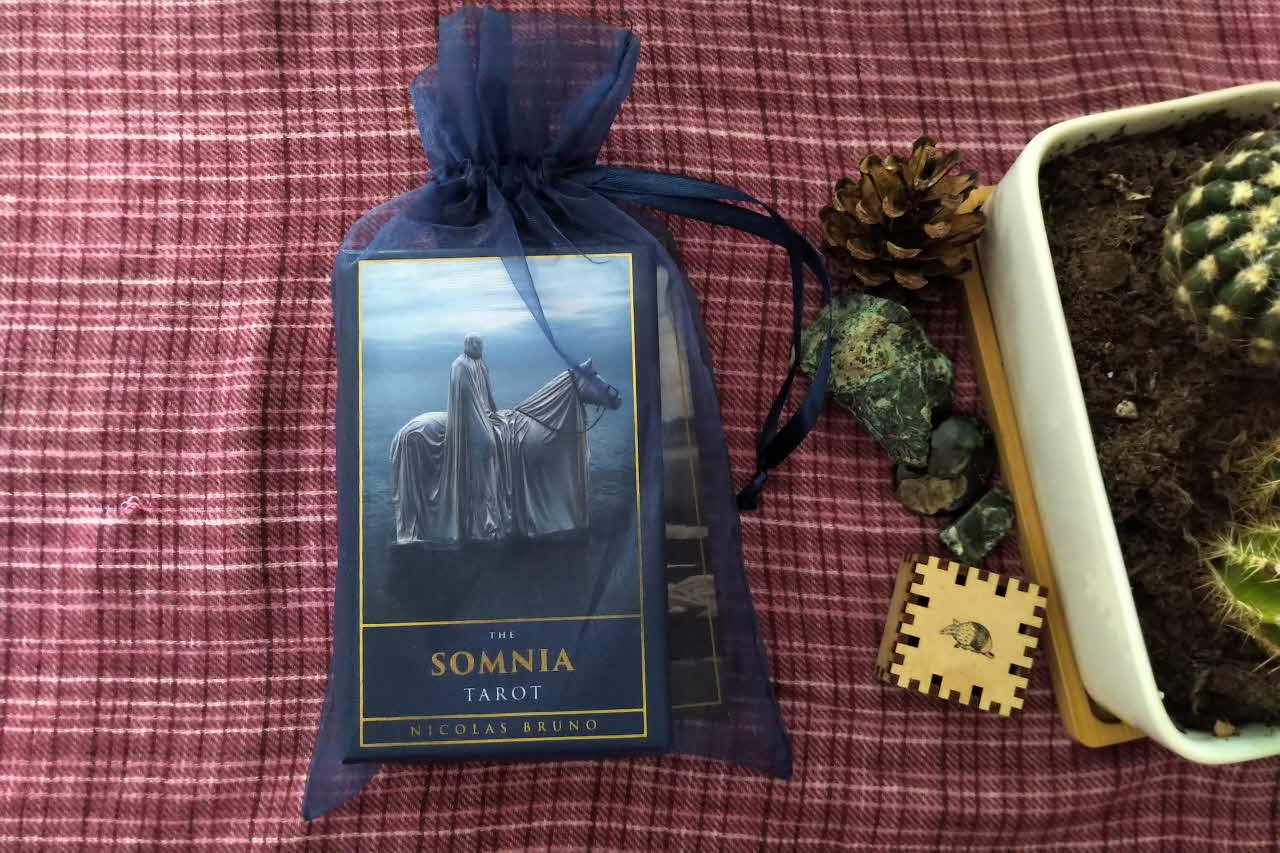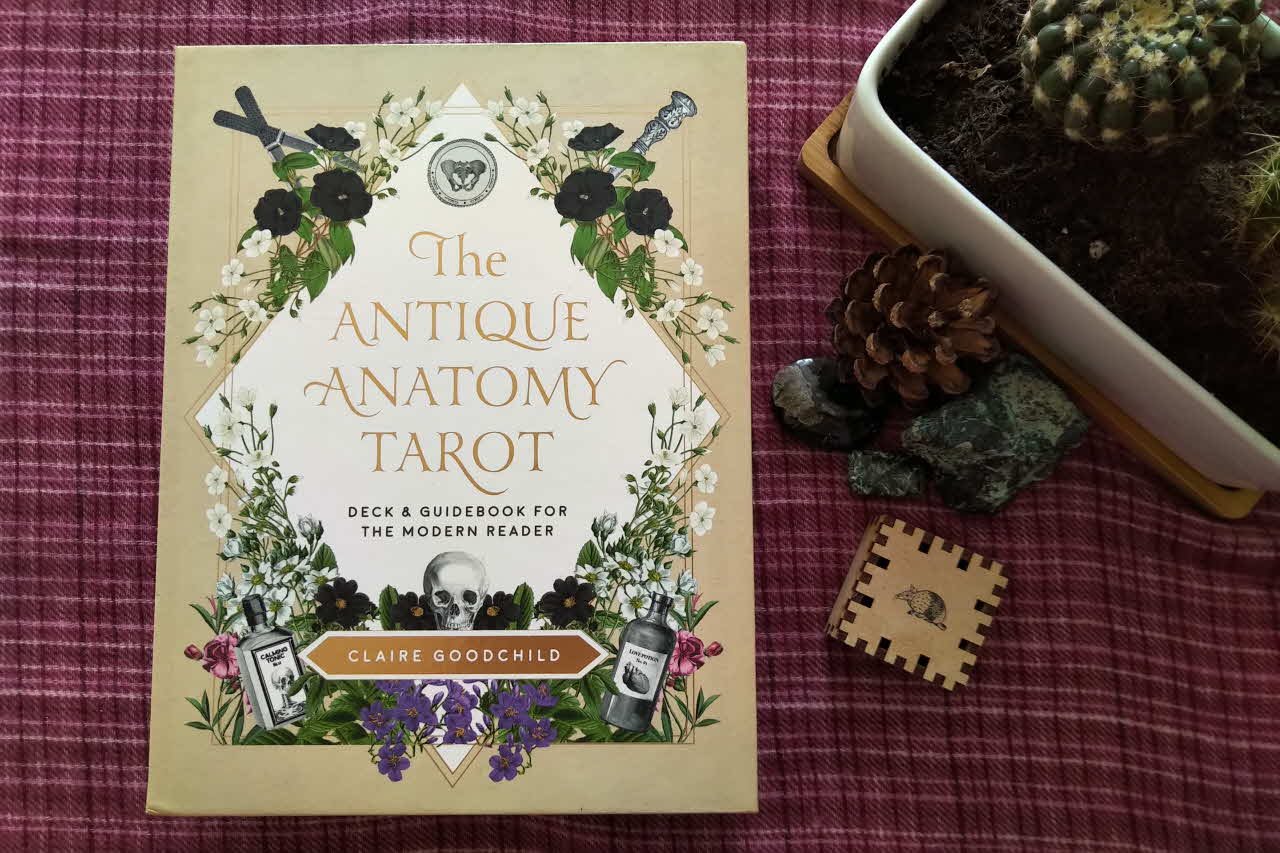The Shadowland Tarot


This is the most expensive deck I’ve bought in a while, so I feel justified in being less than impressed with its shoddy box insert. Now that I’ve got that bit of info out of the way, I’ll get onto the praise. I absolutely LOVE this deck. Yes, it’s childlike. Yes, it borders on ostentatious with its, erm, blingy border. And yes, the liberal use of yellow appears almost garish at times against the rest of the artwork. But it’s a lovely deck. Created by Monica Bodirsky in 2020, The Shadowland Tarot is a heavily illustrated affair and contains a more than adequate guidebook. The minor arcana is illustrated with the same intense artistry, which is an absolute bonus. For each card, the book gives the card interpretation, keywords, the overall message, and helpful questions that form a reflection section at the end. There’s further useful info at the back of the book, such as card layout examples and notes on symbolism.
The major arcana is descriptive throughout and gives strong symbolism to aid with the interpretation of the cards. The Seeker replaces the traditional Fool card; it shows a headless man holding a black cat aloft, pointing out the direction. In his other hand, he has a bag. His head is on the floor. I like that he’s wearing red shoes, which denotes a path of adventure. The Magician is a quirky character with three legs juggling the four suits above his head. He stands behind a table holding an array of items. The imagery appears to lean towards the idea this card implies manifestation and magic more than anything connected to mental or verbal chatter. Sure enough, the book does not mention the mental dexterity aspect or communication often referred to in traditional interpretations. The High Priestess is a lovely card and reminds me of childhood books that told stories of witchery and old women living in the woods. She carries a broom in one hand and holds a book close to her body in the other. The broom suggests clearing out when necessary, and the book held near the stomach implies the body’s wisdom. Standing on the moon further emphasises the need to trust instinct. The themes of nature, nurture and growth are strong in The Empress: A heavily pregnant woman stands as one within the trunk of a tree. The Hierophant looks like an old nordic mythical creature. We see similar attire in one of the characters in the following card, The Lovers. The Chariot gives a quirky take on the traditional and replaces horses with spiders. Another card design I like is The Tower; there is no mistaking that everything has fallen apart as the figure plummets to earth upside down with nothing to protect his head but a feeble-looking umbrella.
The Moon stays close to tradition and shows a female on a winding path illuminated by the moon’s light. She’s standing still but is clearly on a walk with a pet crayfish on a lead. The book says: If I stay on this path and don’t fall for any tricks, I can make it to Grandma’s house. Monica tells us the girl is on her way to visit her grandmother when noticing the moon looks like a wolf or a dog, and the journey is one she makes every month.
Keywords: Reflection, cycles, growth, perception, bravery, intuition, spirituality.
Shadows: Delusion, erratic, deception, visionless, discouraged, mania, disruption.
REFLECTIONS
How do I feel during a full moon?
What do I need to reflect upon in my life?
What hidden fears do I need to face?
What is it I wish to grow in my life?
Are there cycles in my life that follow the waxing and waning of the moon?
I’ve never considered the word bravery in association with the moon. In fact, I’d generally say it to be the opposite and more avoidant, evasive, and favouring action and behaviour that is indirect and difficult to ascertain. Despite reservations about some of the given keywords within the major arcana, I absolutely love the reflections sections. I think they’re an excellent idea for those who like to work with their decks in a way conducive to self-development.
Much of the imagery is pretty consistent with traditional meanings within the minor arcana, making it a good deck for beginners. Monica points out that the minor arcana generally indicates a shorter period or temporary events. I haven’t personally noticed this to be the case. I find the minors are usually better at predicting timing overall. A few of them will show up during very intense processes. While it is generally true that significant life events will be represented with more major arcana, the minors usually provide the details. I’m impressed Monica chose to keep the reflections section for the minors because so many deck creators don’t give them the attention they deserve.
I found I didn’t have a favourite minor suit and thought they were all equally interesting. I really love the five of pentacles with the bigfoot lurking on a group surrounding a campfire. The emphasis here is on the more contemporary interpretation of being left out in the cold. Traditionally, its primary meaning would be poverty, financial losses, and occasionally physical illness. I watched tarot readers on Youtube over the last few months and noticed that ‘left out in the cold’ seems to be the only meaning attached to this card. Monica makes no reference to the poverty aspect at all in the keywords. It is given but a brief mention in the main message section for the card. Jana Riley’s Tarot Dictionary and Compendium (1995) offers interpretations for the cards from fourteen prominent tarot readers, and ‘out in the cold’ is mentioned by Norma Cowie and Mary Greer. Aleister Crowley designated the astrological correlation of Mercury in Taurus and called the card the Lord of Worry. All other readers she lists centre the interpretation around either worry about finance or health or lack of physical security and instability in the physical realms. It may be that online readers are strict adherents to the work of Greer or Cowie. Still, I feel it’s important to point out that the five of pentacles means much more than just not being invited to share space with others.
The nine of pentacles is a curious but not out-of-place image. Those who draw this card regularly are often self-reliant, self-employed, and generally self-sufficient in as many ways as possible. Its astrological correlation is Venus in Virgo and is known to indicate aloofness. However, Monica isn’t suggesting this and instead implies that it means restrictions arising from work. Her interpretation of the card says the advice needs to indicate a lack of spiritual or creative fulfilment, but I’ve generally found the opposite to be true — most who get this card are actively engaged in following a creative passion and have more work-based freedom than most. It’s also not uncommon to see it appear when reading for other readers, and these types are often very engaged with their own spiritual well-being. The Knight of Pentacles is shown as his typical slow-moving self. He’s riding a snail and holds a bag with a dollar sign aloft. The dollar sign features heavily in the pentacles cards, and I would take this as a suggestion to remember that materialism could be a factor. It also shows up in The Devil, which is interesting because it often represents spiritual versus material conflict. The Queen of Pentacles looks like a typical witch as she carries a cauldron and has a black cat by her feet. Curiously, the dollar sign is quite small and sits in the cauldron alongside a baby, it could be easily missed with everything else going on in the image. The King of Pentacles has no dollar sign but sits at a desk counting money. He has crystals growing out of the top of his head; this could indicate a man who is both aesthetically pleasing and valuable. The pentacles are a strong suit in this deck and I like that the symbolism is easiy to read.
The cups are another good suit and I like the lightness of the fish in the cup for the ace. The two of cups is lovely, and the mirroring between the two creatures expresses the reciprocity aspect of the card exceptionally well. The three of cups also sticks close to a traditional portrayal and shows three people engaged in a celebration. The characters are very different to one another, and I wonder if this could be a subtle indication of the coming together of disparate forces too. The fat lazy cat in the four of cups expresses the ‘boredom and too much ease’ that can sometimes be associated with this card. The five of cups made me laugh because I could see how the creature from the black lagoon, surrounded by trash, is a fitting descriptor for the card. With the five of cups, we can often be caught up in the desire for something that doesn’t really fit with who we are at a fundamental level. The knight of cups is an exciting take on the Casanova aspect of this card. Mermaids are known for their hypnotic allure, and using one to represent the knight emphasises the romantic and magical aspects of the card. The Queen of Cups looks like a bit of a hippy; she’s singing with her tea in one hand and guitar in the other. In the distance behind her, we can see a lighthouse, and I think there’s an implication that this card possibly represents someone who guides others through the use of their voice. Because of the lighthouse, I would go so far as to suggest it may imply someone who can warn of danger and help others to avoid taking a treacherous path. The King of Cups looks pretty cool too, but unusually, he’s walking on the shoreline and carrying a bag. The shell as his head could indicate a couple of things; one is that he’s carrying knowledge, and the other is that he’s at home wherever he goes. If he comes up in a reading, he could be someone looking for a new home or maybe he finds it difficult to stay in one place.
An octopus perches on a rock, holding three candles aloft for a ship in the distance for the three of wands. Monica writes about how this represents ongoing collaborations. Of all the minor cards, this one has perhaps the broadest range of interpretations, depending on who you follow. Jana Riley says it’s expressing yourself clearly and is one of the most powerful cards in the minor arcana. In conjunction with other cards, Barbara Walker says it indicates the possibility of changing the outcome of a reading. Norma Cowie thinks it’s putting thought into action, and Gail Fairfield says it’s about defining and clarifying the identity — understanding and seeing yourself more clearly. Many Youtube readers say this card is about waiting, but as I’m sure I’ve mentioned before, I don’t understand where that comes from because the card is strongly associated with the sign of Aries. The seven of wands imagery hints at the potential for explosive energy with a woman holding a wand above the tip of a volcano. It certainly suggests a time to power up, but also to draw energy from natural sources. The Knight of Wands has more than a hint of romance and passion about him. He stands steady while holding a red rose in his mouth and brandishes a wand as though it were a staff. Prediction-wise, he’s likely to indicate a romantic suitor on the horizon, or if the card represents you, you’ve probably got your eye on someone. I find the Queen of Wands to be quite enigmatic. She stands tall with her long hair covering her face, and she has a black cat beside her. The vibrant yellow dress covers every inch of her body, and the sun shines brightly behind her. She’s certainly regal, but there also seems to be an air of mystery about her. In the guidebook, Monica says ‘her size and demeanor are symbolic of her self-consciousness about her power. Her cat is symbolic of independence, and her staff of wisdom.’ I’d say the cat can represent instincts too.
I love how the three of swords shows a suave-looking crow. I thought he was a representative of the classic fuckboy who’s been sleeping around and leaving a trail of broken hearts behind him. Monica did not have this in mind and says although he looks like a cool bird, it’s probably a cover-up for his emotions — he’s a survivor torn between his thoughts and feelings. The nine of swords is a very cute representative of the night-time anxiety often associated with this card. I like the suggestion that fears may be irrational, like some people's fear of spiders. That being said, if those spiders are biters and packing some toxic venom, we have every reason to be anxious. The ten of swords imagery is actually pretty good. We have a voodoo doll stabbed with ten pins on the floor in the corner of a room. I think this emphasises how the state of ruin has been inflicted by someone else. Whatever has taken place, it’s most certainly the end of something. The same figure can be seen in the seven of swords in much the same slouched position except with fewer pins in its body. In the seven, we also see a figure carrying five swords while running away. It’s not uncommon for artists to show a progression of events with the minor arcana, The Mythic Tarot by Liz Greene and Juliet Sharman-Burke made use of this method very well. The Shadowland Tarot doesn’t tell a story from one through ten, though, which makes Monica’s repetition between these two cards quite obvious. I would suggest the seven of swords in this deck is very much a warning for a further attack which could leave a person even worse off than they already are.
The court cards written interpretations are a source of major disappointment. Monica has chosen to engage in such a narrow and oppressive descriptive style. In a bid to secure woke points and be ‘inclusive’, she’s managed to alienate most people on the planet. Pages are traditionally younger females, knights are younger males, Queens are older females, and kings are older males. Even the decks of yore would make clear it usually represents a man or woman. There was never a hint of ‘queens are always female’ etc. Instead of respecting that blokes have feminine qualities and women have masculine ones, she’s tied herself in knots to appease the adherents of gender ideology. The unhealthy trend of insisting people can change sex or that a bloke wearing lipstick and a dress is somehow a woman is one of the most toxic trends of recent years. It is disheartening to see the fringes adopting the mantras without question.
Back in the day, tarot and other predictive arts were places people could be relatively safe from conventional stereotypes. Stevee Postman was well ahead of the game when he published his Cosmic Tribe tarot back in the early ’90s. He made sure to include two extra lovers cards, one showing a gay couple and the other showing a lesbian couple. Postman also made sure to include imagery of fat women and skinny women. The most controversial point in the images at the time was actually the minges. At that point, the influence of porn was already imposing itself on the habits of the club-going masses, and it was not considered cool or trendy to have much of anything down there at all, but Postman kept it real. Tarot has always been a tool to help people get in touch with the truth and accept themselves as they are. I think it’s really sad to endorse a toxic, socially constructed mainstream fad. For those of you with radical feminist leanings, I’d say the deck is still absolutely lovely and well worth the investment — you just need to read around the gender fluff.
At the time of writing, Amazon has it on sale for £24. I will order another copy for collection purposes because my current copy has already lost much of its blingy border. The Shadowland Tarot artwork has a great vibe and is easy to connect with if you’re drawn to work with it. I love the concept and think Monica has done a fantastic job maintaining the strength of meaning throughout the deck. It’s vibrant, happy, and positive without being twee or cheesy. I’d happily give it a 9 out 10, with that one mark deducted for the genderist woo.
Update: My review of The Shadowland Lenormand is here.
Recent Posts
Archives
Categories
- Animal-centred
- Books
- Decks For Self-development
- Difficult Decks
- Expensive Decks
- Lenormand Decks
- Oracle Cards
- Oracle Cards For Beginners
- Out-of-print
- Personal Favourites
- Published 2000s
- Published 2010s
- Published 2020s
- Tarot
- Tarot & Oracle Sets
- Tarot Cards For Beginners
- Under £15
- Under £20
- Under £30
- Under £40
- Witchy Decks
- Woman-centred

